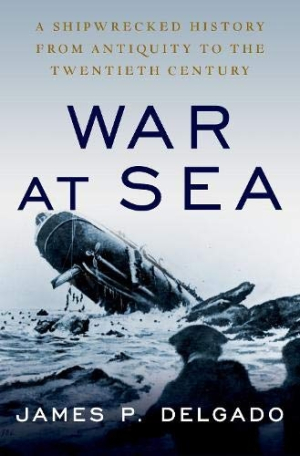War at Sea
A Shipwrecked History from Antiquity to the Twentieth Century
Throughout the ages, humans have always found ingenious ways to kill each other, but a bloodletting milestone was surely reached when the great powers of the classical world—the Egyptians, Phoenicians, Carthaginians, Greeks, Romans, et al—took to the sea to battle for territory and treasure. Historical sources from approximately 3000 BCE onward make mention of an extraordinary list of lethal naval weaponry: bronze rams, grapnels, drags, arrows wrapped in burning sulfur, javelins, slings, darts, mangonels, catapults, and later “Greek fire,” a napalm-like burning liquid shot from projectile tubes by the Byzantine navy to defend Constantinople from Arab ships. The consequences were devastating. Some of the ancient sea battles featured nearly 1,000 ships, carrying upwards of 100,000 men—a large percentage of whom ended up at the bottom of the wine-dark Med.
While accurate casualty numbers will never be known, we can be certain the “sea is our greatest battlefield, and … our largest graveyard,” writes James P. Delgado in his awe-inspiring War at Sea: A Shipwrecked History from Antiquity to the Twentieth Century. With recent advances in underwater technology, the pace of discovery has quickened, and Delgado chronologically updates the ledger of new finds—grave markers on the world’s sea floor—from the ancient world to the Viking age, royal navy battles of Western Europe, Colonial America, the US Civil War, World Wars I and II, and the Cold War.
Reviewed by
Matt Sutherland
Disclosure: This article is not an endorsement, but a review. The publisher of this book provided free copies of the book to have their book reviewed by a professional reviewer. No fee was paid by the publisher for this review. Foreword Reviews only recommends books that we love. Foreword Magazine, Inc. is disclosing this in accordance with the Federal Trade Commission’s 16 CFR, Part 255.

